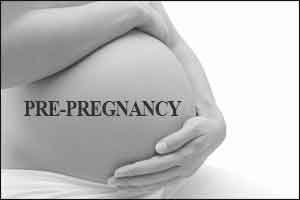- Home
- Editorial
- News
- Practice Guidelines
- Anesthesiology Guidelines
- Cancer Guidelines
- Cardiac Sciences Guidelines
- Critical Care Guidelines
- Dentistry Guidelines
- Dermatology Guidelines
- Diabetes and Endo Guidelines
- Diagnostics Guidelines
- ENT Guidelines
- Featured Practice Guidelines
- Gastroenterology Guidelines
- Geriatrics Guidelines
- Medicine Guidelines
- Nephrology Guidelines
- Neurosciences Guidelines
- Obs and Gynae Guidelines
- Ophthalmology Guidelines
- Orthopaedics Guidelines
- Paediatrics Guidelines
- Psychiatry Guidelines
- Pulmonology Guidelines
- Radiology Guidelines
- Surgery Guidelines
- Urology Guidelines
Does weight of mother during pregnancy affect metabolism of child?

The link between a mother's body mass index (BMI) before pregnancy and the metabolic traits of her children is likely mediated by shared genetics and familial lifestyle rather than effects on the fetus during gestation, according to study published this week in PLOS Medicine by Debbie Lawlor of the University of Bristol, UK, and colleagues.
20 to 50 percent of women in Western populations now start pregnancy overweight or obese, and researchers have hypothesized that this may lead to metabolic disruptions in offspring. Lawlor's group used data on 5,337 mother-father-offspring trios collected in three European birth cohorts. Each dataset included maternal pre-pregnancy BMI, paternal BMI, offspring BMI, and information on 153 metabolic traits in the offspring, based on a blood sample taken at age 16, 17, or 31.
The researchers found associations between parental BMIs and offspring metabolic traits including VLDL-lipoproteins, VLDL-C, VLDL-triglycerides, VLDL-diameter, glycoprotein acetyls, triglycerides, HDL-lipoprotein, and HDL-C (all P<0.003). However, the association was not significantly stronger for maternal compared with paternal BMI, arguing against an intra-uterine mechanism. In addition, after taking offspring BMI into account, the data suggested that the apparent link between parental BMI and offspring metabolic traits could be largely explained by the association between parental BMI and offspring BMI. The study was limited by the fact that BMI was self-reported, as well as the fact that BMI may not fully capture the complexity of different body compositions.
"Our findings are more supportive of shared familial factors than an intrauterine developmental overnutrition mechanism for associations of maternal BMI with offspring metabolic traits," the authors say. "Interventions to reduce BMI in all family members may be more beneficial for cardio-metabolic health than focusing on reducing maternal pre-conception or pregnancy BMI.
For more details click on the link : Diana L. Santos Ferreira, Dylan M. Williams, Antti J. Kangas, Pasi Soininen, Mika Ala-Korpela, George Davey Smith, Marjo-Riitta Jarvelin, Debbie A. Lawlor. Association of pre-pregnancy body mass index with offspring metabolic profile: Analyses of 3 European prospective birth cohorts. PLOS Medicine, 2017; 14 (8): e1002376 DOI: 10.1371/journal.pmed.1002376

Disclaimer: This site is primarily intended for healthcare professionals. Any content/information on this website does not replace the advice of medical and/or health professionals and should not be construed as medical/diagnostic advice/endorsement or prescription. Use of this site is subject to our terms of use, privacy policy, advertisement policy. © 2020 Minerva Medical Treatment Pvt Ltd